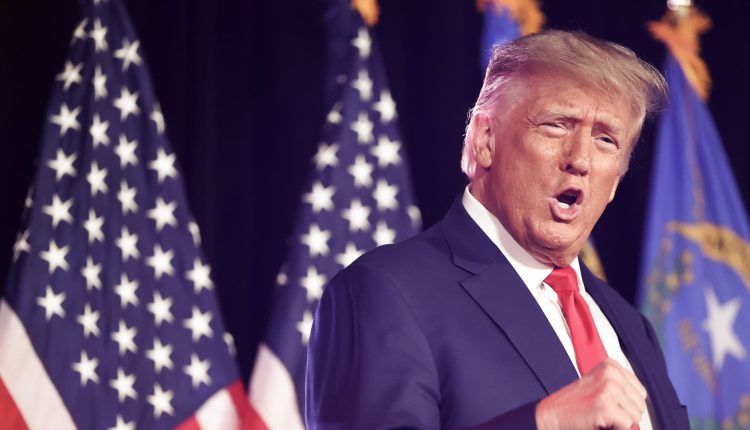Former U.S. President and Republican presidential candidate Donald Trump delivers remarks at a Nevada Republican volunteer recruiting event at Fervent: A Calvary Chapel on July 8, 2023 in Las Vegas, Nevada.
Mario Tama | Getty Images
Former President Donald Trump has won the Nevada Republican caucus, NBC News projects.
Nevada is the first 2024 primary contest in the West, and come November it will be a closely-watched swing state.
In the 2020 general election, President Joe Biden won the state with just 50.1% of the vote, or slightly more than 33,000 votes in a state with 1.8 million registered voters.
Democrats have won Nevada in the past four presidential elections. But in 2022, a Republican, Joe Lombardo was elected governor. Lombardo has already endorsed Trump for president.
The Nevada Republican Party will award 26 delegates proportionally based on the results of Thursday’s caucuses. Trump’s victory in the small, in-person voting events was all but assured.
The only other person on the ballot was Ryan Binkley, a pastor and long-shot presidential hopeful.
On Tuesday, Trump’s only remaining serious primary challenger, former South Carolina Gov. Nikki Haley was defeated in the Nevada Republican primary.
Haley was the only Republican candidate on the ballot, but Nevada GOP voters also had the option of voting for “none of these candidates,” and they did. Sixty-three percent of the approximately 200,000 people who voted cast their ballots not for anyone, but against Haley.
Trump ran virtually unopposed in Thursday’s caucus because Haley chose to appear on the primary ballot instead. Candidates may only participate in one contest, but registered Republican voters can vote in both the caucus and the primary.
Haley campaign manager Betsy Ankney downplayed the importance of this week’s Nevada contests. “We have not spent a dime nor an ounce of energy on Nevada,” she said in a press call ahead of Tuesday’s stinging loss to “none of these candidates.”
This is a developing story, please check back for updates.
Read the full article here

